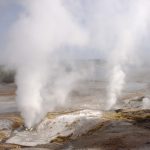UFO fans recognize abduction claims on Extraterrestrial Abduction Day: Winnipeg UFOlogist0
- From Around the Web, UFO News
- March 25, 2020
Although the world is in a serious health crisis with the COVID-19 pandemic, March 20, for some people, commemorates another type of crisis entirely — although it’s one more frequently seen in science fiction.















